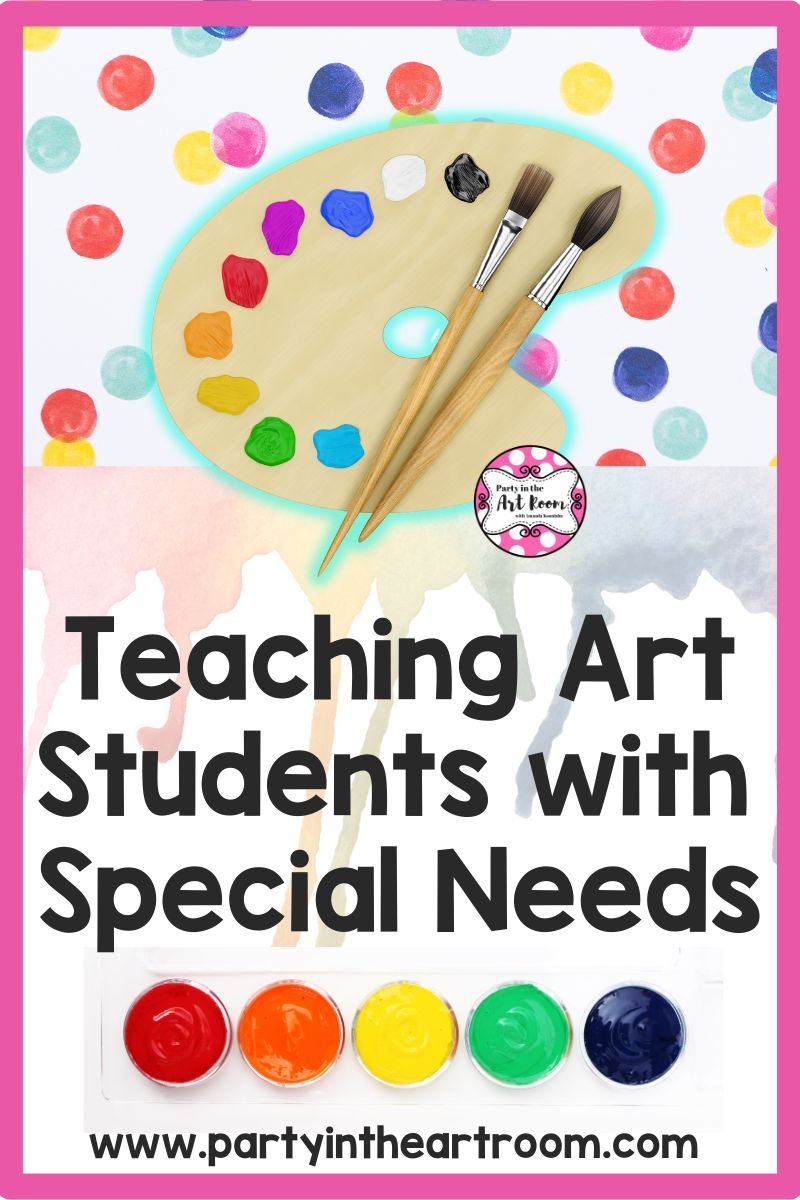Effectively Teaching Art to Students with Diverse and Special Needs
The most important thing to keep in mind when planning to meet the needs of students is that they are all unique individuals with unique needs. The diversity in human beings is beautiful. It is worth celebrating.
Unfortunately, I don’t think teachers get enough training in teacher prep programs or through professional development programs on how to best meet the needs of all learners. I know I didn’t get enough training. I think this is because it requires collaboration and a willingness to consider each individual student. That can’t be standardized or taught in a couple of hours…or a semester for that matter. It also requires time.
So, let me preface the advice I’m about to give with an acknowledgement that teachers have very little time for thinking and planning. I know lack of time is always a barrier to doing anything the right way in a school.
THIS right here is important though. We are not only legally required to give each student an appropriate educational experience, we are ethically bound to do this. Even beyond that, the kiddos all deserve the very best we can provide. We have to try!
#1 Read and Carefully Consider IEPs and 504 Plans
Learn as much as you can about your individual students. Then, ask yourself what could help each one reach their goals.
You will see ways you can incorporate similar processes for more than one student while also keeping individual needs in mind.
You will also begin to see that the accommodations and modifications you make could be beneficial to many of your students who do not have an IEP or 504 Plan.
#2 Communicate with Parents
Parents are truly amazing. They can tell you what their children enjoy, what they find difficult, what frustrates them, what is too easy, and more! Parents have a wealth of information they can share about their children that can help you better understand how to meet their needs.
Some things that I like to ask parents are:
What does your child do well when it comes to art?
What goals can we set for your child?
What hopes do you have for your child this year?
Should I be aware of anything that could help me be a better teacher for your child?
What does your child like to do in their free time?
#3 Collaborate with Other Teachers
General and special education teachers spend the most time with students outside of the art classroom. They have insight into what students need that can be valuable to art teachers.
Here are some questions I like to ask other teachers when I am trying to better understand my individual students:
How long is the student usually required to attend to a task?
What types of fine motor skills is the student working on?
Does the student have any sensory issues that I should know about?
What types of rewards do you use with this student in your classroom?
Would it be appropriate for me to attend meetings with the student’s parents when the time comes?
Conclusion
Wouldn’t it be nice if we could just download a lesson plan that would magically fix our classrooms? I feel like sometimes we are looking for that, especially when it comes to figuring out what our students with special and diverse needs deserve in our classroom.
It just doesn’t exist.
If someone tells you they have a lesson plan that will work magic without you having to do anything, RUN. Seriously, its snake oil. don’t buy what they are selling.
You would be better off putting the time in up front to do these 3 things than trying a magic lesson plan and having it fail. That’s just not fair to you or to your students.
Remember, teaching is 90% problem solving. That means teachers have to use those big beautiful brains to think critically and creatively about every lesson, student, situation, resource, etc. that they make decisions about.
I can’t think of a single instance where something that was billed as a complete solution actually did completely solve anything in my classroom or school. It always required teachers and school leaders thinking! So, keep that in mind and use that going forward as you endeavor to meet the needs of all of your wonderful students.
Quick note: This post is not intended to be legal or ethical advice regarding IEPs or 504 Plans. It is not intended as advice relating to educator codes of ethics or contractual obligations. This is built on my background experience and what has worked for me in my classroom. Please consult a qualified legal entity or your school district and administration if you have legal or ethical questions relating to your job.I’m Amanda, and I align standards and integrate content to help teachers meet the needs of the Whole Child in art class! I have yet to find a standard that I couldn’t teach through art, and I want to share it all with you.
Not sure where to start with bringing art and content together? This freebie guide is packed with 25 ideas to align your art lessons with math and ELA standards. Your students will be crafting art and practicing algebraic thinking. Win-win!
I want all students to feel successful in the art room, so I created a standards-based Daffodil Collage lesson to do just that! The lesson includes an artist study, student reflection, and more, so push your artists to their full potential.
Follow along on my Instagram page for more tips on teaching the Whole Child in the art room!
Connecting art and content together doesn’t have to be mind-boggling. I’ve made it simple with 25 math and ELA art lesson starters - for free! Plus, I included 15 worksheets for students to reflect on their art-making journey.



